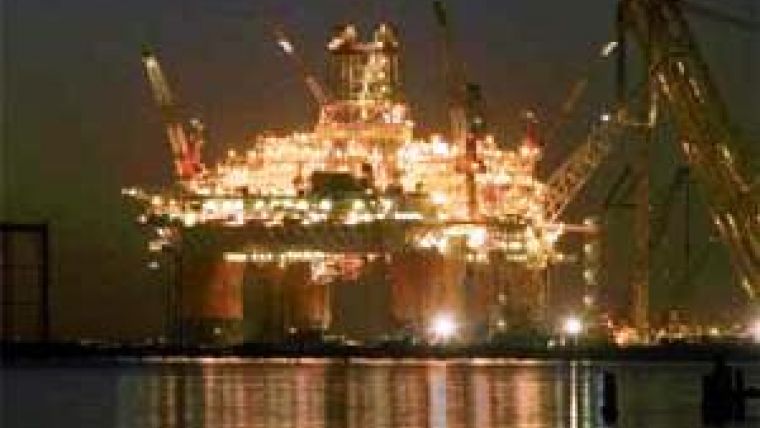Fugro GEOS Rises to Thunder Horse Challenge
Fugro GEOS Inc will provide real-time full water column current measurements for BP's Gulf of Mexico Thunder Horse PDQ, the largest production drilling quarters semi-submersible in the world. Fugro Geos chalked up ample "firsts" in their determination to meet the challenge.
The contract, which has seen the system successfully operating for nearly one year, involved an extensively detailed system design, calculation, testing and the building of the first self-contained 38kHz ADCP (Acoustic Doppler Current Profiler). The design included the repackaging of all the electronics into a subsea housing, and the installation of a ruggedized cable to the surface for power and data transmission. Thermal analysis was undertaken to ensure that the electronics did not overheat in the subsea housing. The 38kHz ADCP, which is capable of the longest profiling range ever achieved, is suspended beneath the surface of the Thunder Horse platform on a custom built frame, measuring down to depths of over 1000m in real-time.
‘Another first was the installation of the first cabled mid-water 75kHz ADCP,’ explains Caroline Nicholas, Seasystems Division Manager of Fugro GEOS Inc. ‘Installed at 500m above the seabed in 1860m of water, the ADCP was contained in the biggest buoyancy buoy ever produced: a 76inch buoy of 4000lb buoyancy. Our third 'first' was the installation of the first cabled seabed 75Khz ADCP in 2000m of water.’
Installation of the 75khz ADCPs was carried out using an ROV vessel. The ADCPs were lowered into position from the vessel with assistance from an ROV, which attached the subsea ADCPs to a preinstalled custom mud mat. Data & power connections were then made using ROV wet mateable connectors. To ensure data transmission over such long distances, 5,500m of fiber optic cable was used, running from the seabed to the Thunderhorse PDQ platform.
The system provides real-time full current data updates every 10 minutes to Fugro GEOS weather monitor software which is then displayed through the Fugro GEOS ADAM (ADCP Data Acquisition and Management) web-based system.
Beam analysis was used to orient the ADCPs and to avoid obstruction of any interference from other subsea structures, and to ensure data quality to the client.














